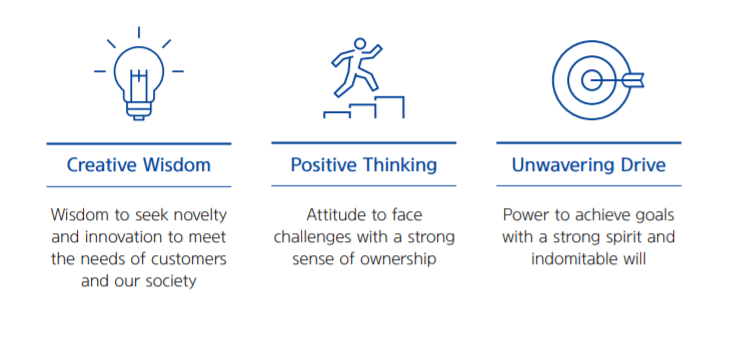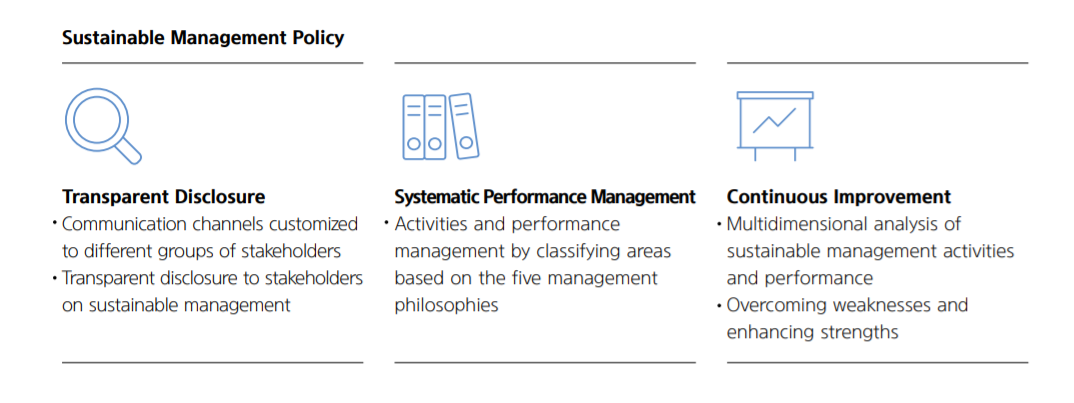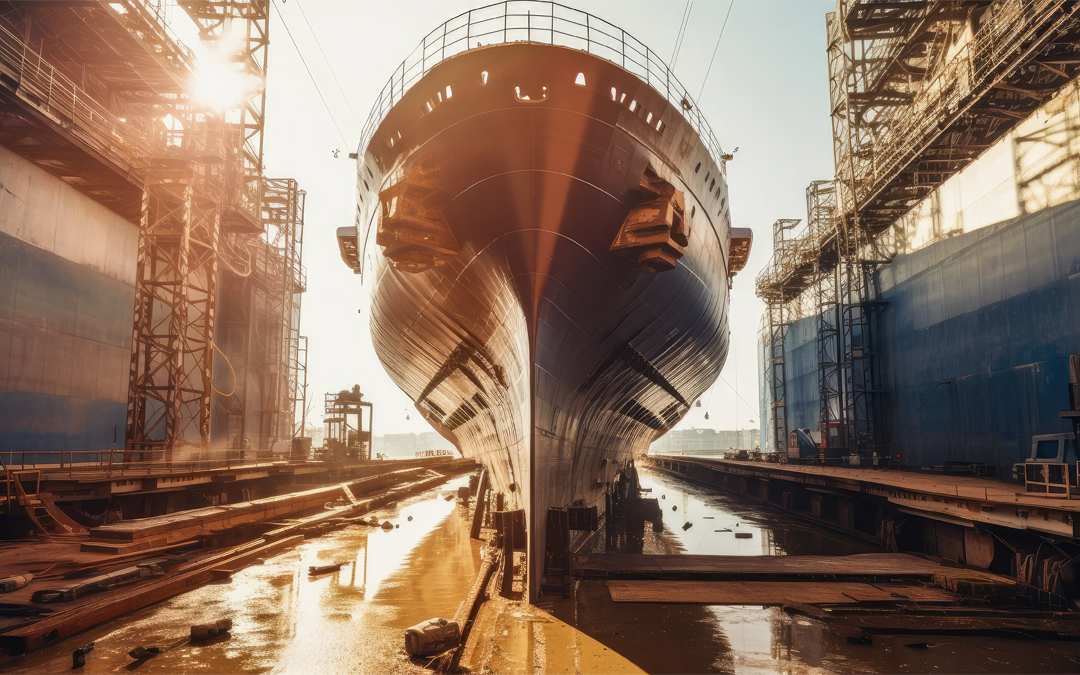The State of Project Management 2018 survey by Wellingtone reveals a harsh truth — dissatisfaction with the current level of project management maturity in organizations all over the world is higher than a year ago. Nearly 56% of survey respondents believe they cannot demonstrate improvements in on-time project delivery, organizational efficiency, or profitability. This is almost 10% higher than in 2016. Due to poor project performance, $99 million is wasted for every $1 billion invested. However, three major players in the shipbuilding industry — Hyundai Heavy Industries, Mitsubishi Heavy Industries, and Samsung Heavy Industries — are expecting stable growth over the next couple of years, according to Sea News. Let’s see how the top shipbuilding companies approach project management and learn lessons about successful project delivery based on their experiences.
Hyundai Heavy Industries
Hyundai Heavy Industries (HHI) is a top South Korean shipbuilding company that holds roughly a 15% share of the world’s shipbuilding market. HHI had delivered more than 2,150 ships to 320 shipowners in 51 countries as of 2017. The capacity of HHI is superior to its competitors — a four-kilometer Ulsan shipyard with nine huge “Goliath Cranes,” 16,000 well-trained and experienced people in production, R&D, management, and administration, and the ability to manufacture any ship of any size with superb quality and the highest deadweight tonnage in the world.
HHI President and CEO Kang Hwan-Goo credits this spectacular success to a business philosophy characterized by creative wisdom, positive thinking, and unwavering drive.

Credit: HHI’s Integrated Report 2017
According to the HHI Integrated Report 2017, the shipping industry was severely impacted by the global recession and confronted stagnation. The decrease in new orders along with austerity measures were significant to the extent that these factors began restructuring the shipbuilding industry and the company itself from the inside. To prevent a crisis, HHI rationalized their management by disposing of non-core assets (like stocks and real estate), reducing costs, and ending extra working hours to reach a new level of financial stability. To improve their project management practices, C-levels at HHI developed a sustainable management policy.

Credit: HHI’s Integrated Report 2017
World Maritime News reports that HHI has now set a target of $65.2 billion in revenue by 2022. Management at HHI has developed an improvement plan with quality and technology as their top priorities. Their plan for the next couple of years is to prevent quality failures with bold investments by “building a database of previous failure cases and production traceability management.” To engage their employees to the fullest, HHI will implement a Team Responsibility Policy for quality failure costs. To increase productivity, HHI will use a robotic system based on Internet of Things and automation technologies — the first in the shipbuilding industry. This system will be equipped with a high-frequency inductive heating system and a multi-joint arm. Compared with manual labor, the system will be able to weld, blast, paint, and perform heavy lifting three times faster, and is expected to save $92.3 million.
HHI’s multi-joint arm for welding, blasting, and painting. Credit: The Korea Bizwire
HHI is dedicated to building flexible business management systems, embracing the digital revolution, and adopting environmentally friendly technologies.
Read on: Shipbuilding Trends in 2018 and How Project Managers Can Adapt
Mitsubishi Heavy Industries
Mitsubishi Heavy Industries (MHI) is the only international company capable of integrated production of not only ships but also engines, high-performance turbines, and marine machinery. It’s considered a rich repository of superior shipbuilding technology. MHI has over 80,000 employees on board from different countries and cultures who are led by effective team management. The company’s project management success is due to constant supervision and a comprehensive understanding of every detail of a project’s progress, from planning through delivery. MHI has an independent quality management system to conduct objective inspections. According to President and CEO Shunichi Miyanaga, to achieve sustainable growth, management is focusing on two primary components of their 2018 medium-term business plan:
First, we will work toward achieving a balance between net sales, total assets and market value by following the “Triple-One Proportion” (TOP) concept, which aims to achieve a 1:1:1 ratio of these three key factors.
Second, we will focus on near-term solutions in the 2018 Medium-Term Business Plan while simultaneously developing a long-term strategic process through MHI Future Stream. MHI Future Stream takes us back to the roots of our call to action — “Move the World Forward” — by leveraging global megatrends and innovative new technology to transform society for the better.
The MHI Report 2017 indicates that the company plans to develop employees who can “take the lead in moving the organization forward and overcoming new challenges.” The lesson we can learn from MHI is to create an environment conducive to innovative practices, which means communicating the company’s goals and strategies to pursue them. The team has to know what’s priority number one.
Since 2007, MHI Group has changed its management paradigm toward portfolio optimization, introducing a strategic business evaluation system and focusing on cash flow. These steps have been essential to strengthening the company’s financial foundation and building up resilience. As stated in the report, between fiscal years 2010 and 2016, MHI successfully secured a cumulative free cash flow of nearly $14.4 billion thanks to concentrating on MHI’s key competencies.
Read on: Our Top 10 Articles of 2017 for True Project Leaders
Samsung Heavy Industries
Samsung Heavy Industries (SHI) has one of the largest South Korean shipyards and the world’s highest dock turnover rate, which is the number of ships that a dock can launch. It’s capable of producing over 30 ships a year. What differentiates SHI from its competitors is its world-leading automation rate. In the Geoje shipyard, nearly 68% of ships and equipment are carried out by robotic systems that inspect, clean, and weld pipes. The Geoje shipyard, SHI’s biggest, is especially famous for its so-called spider robot, which can clean a ship of rust and other contaminants in preparation for painting. It’s no doubt that Geoje can be called a digital shipyard, but what really stands behind SHI’s success is its efficient execution of projects and, what’s more, its ability to draw project management lessons from the company’s own experienсe and figure out mitigation methods. Reporting progress on every stage of engineering, procurement, construction, and installation, SHI delivers key lessons to continuously improve project performance. We highly recommend checking out SHI’s project management lessons to get a better understanding of how the company learns from project experience.
Despite operating in the most inflexible and unwieldy industry, the top shipbuilders have set their courses for innovation and digitalization, and with their experience, they’re proving that shipbuilding can adapt to changes as successfully as any other industry. What connects HHI, MHI, and SHI is that these companies have established distinctive cultures that focus on value. For Hyundai Heavy Industries, it’s essential to investigate previous project failures and learn from them. Mitsubishi Heavy Industries keeps on building an organization capable of detailed supervision that ensures transparency. Project managers at Samsung Heavy Industries have elaborated ways to mitigate risks based on their historical loads.
We wish that more companies would learn from their experiences and integrate practices that prove effective specifically to them. To make this journey faster for you, we’ve developed a multi-project management tool called Epicflow. Let us know your contact information by filling out the form below and we’ll be happy to introduce you to a new planning paradigm during a one-on-one session.
Image: Copyright © Hyundai Heavy Industries

